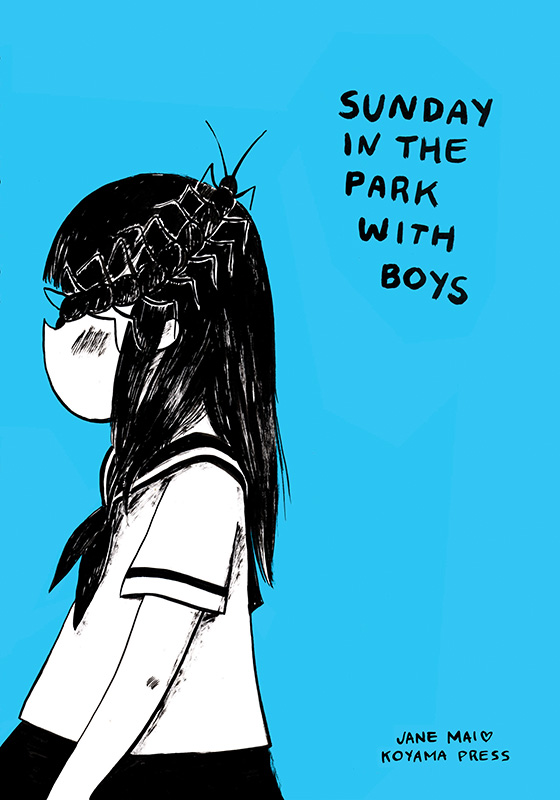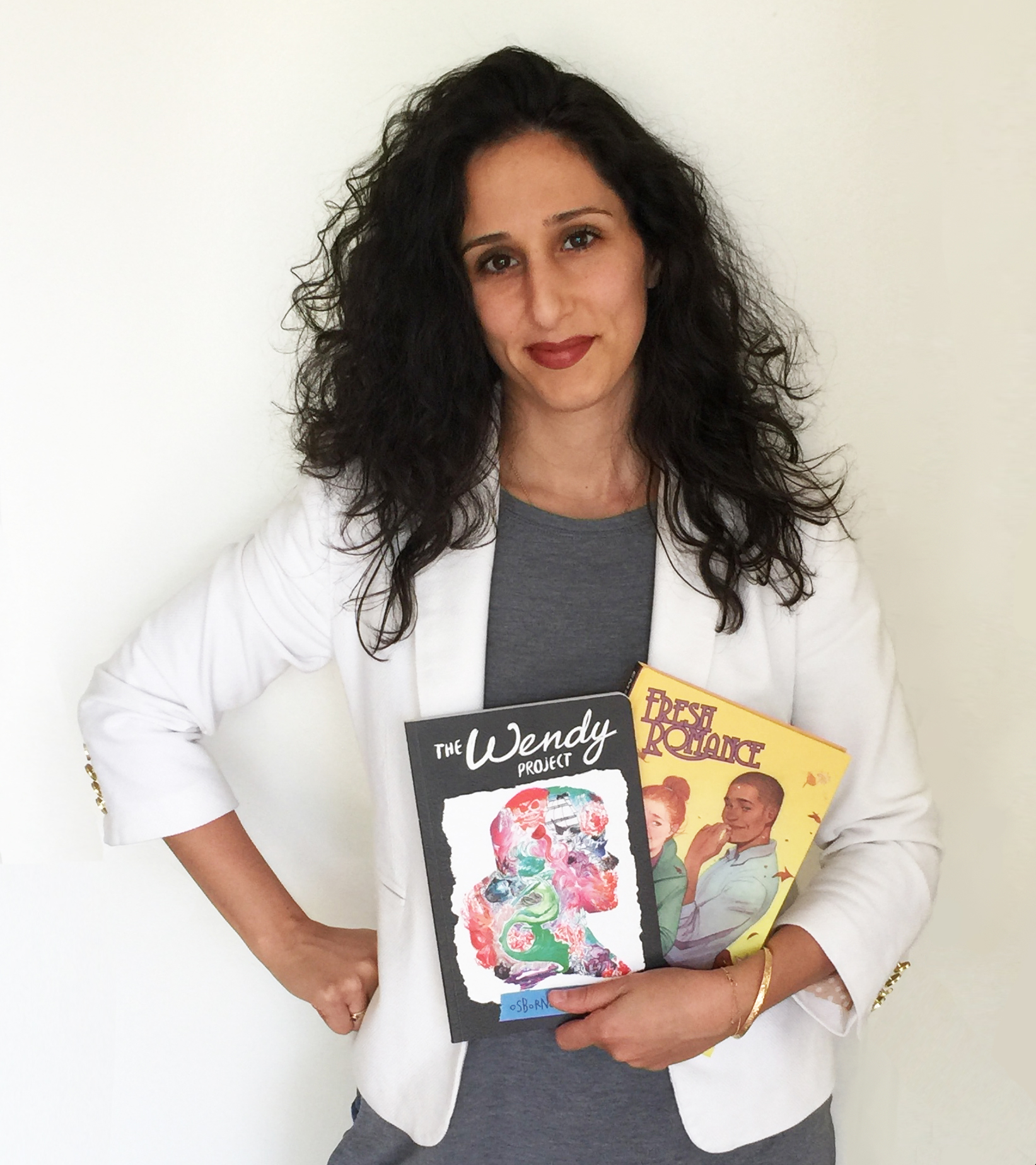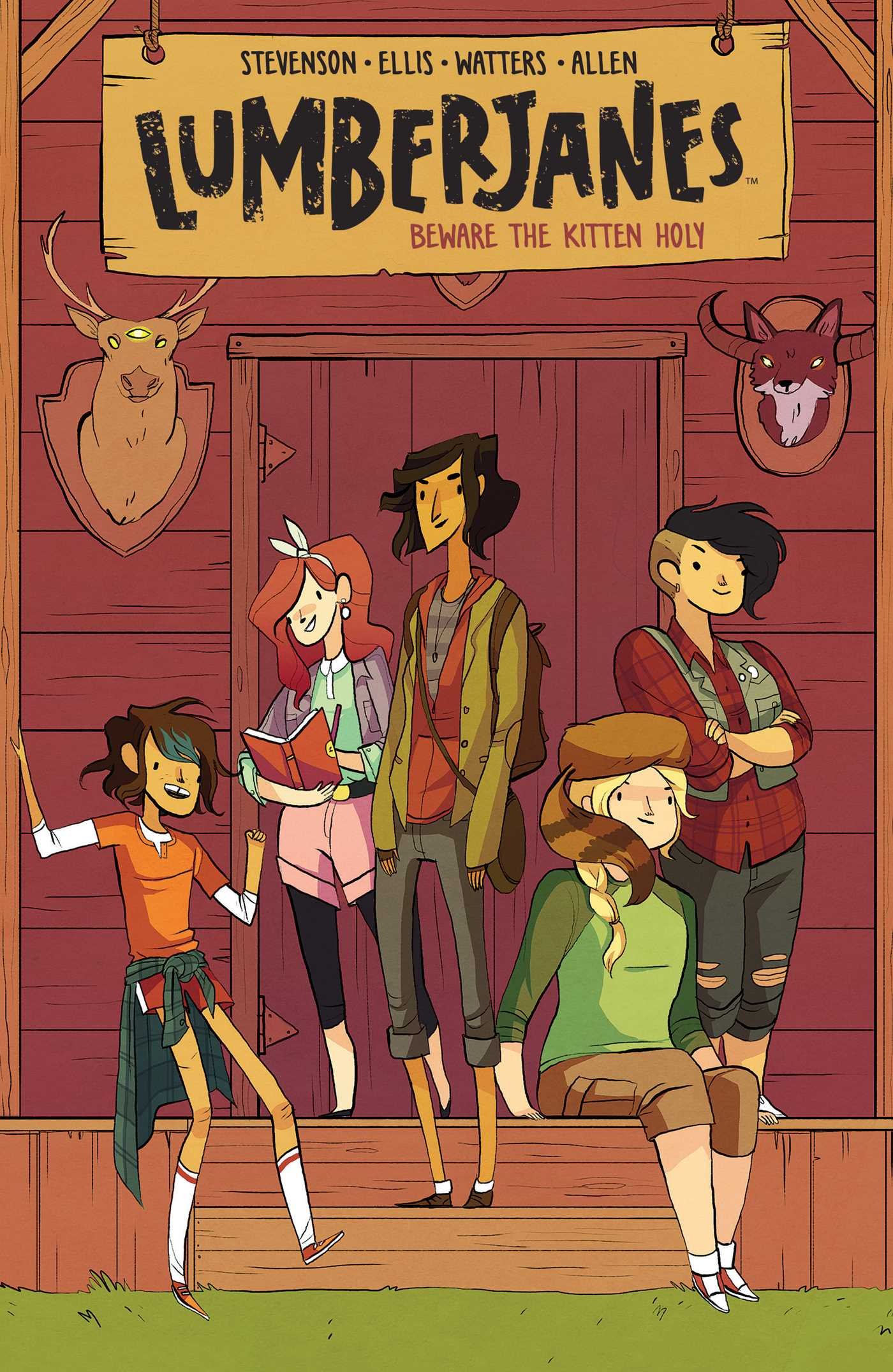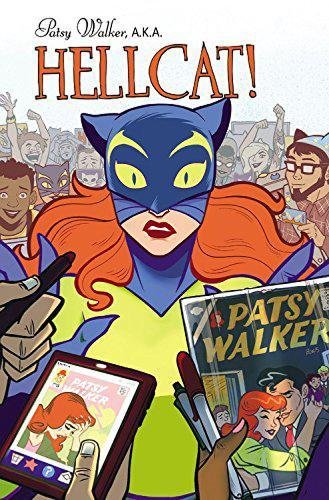The myth that female-centric comics don’t sell is alive and well in the comic book world. Though Marvel Comics and DC Comics have introduced new female characters or given existing characters more prominent roles in the past few years, in 2016, Marvel’s vice president of sales said that retailers had told him consumers “didn’t want female characters out there.” (A few days later, he retracted the remarks.) This was only the latest example of comic-industry insiders expressing doubt in female protagonists at the time: In a leaked email from the 2015 Sony hacks, Marvel Chief Executive Office Ike Perlmutter sent Sony head Michael Lynton a list of female-driven superhero movies that had done poorly at the box office—”As we discussed on the phone, below are just a few examples. There are more,” he wrote. Creators including Kelly Sue DeConnick (Captain Marvel) and G. Willow Wilson (Ms. Marvel) have said they launched female-centered comic books expecting them to get canceled.
Though successful female-centered titles at the so-called “Big Two” keep proving this industry axiom wrong, according to entertainment news site Bleeding Cool, in January of 2017 only 35.8 percent of Marvel covers and 32.4 percent of DC Comics covers featured female characters. Off the page, women fare worse, only making up 16.8 percent of Marvel creators (including cover artists, writers, pencilers, inkers, colorists, letterers, and editors) and 17.1 percent of creators at DC last year.
These dire statistics from the commercial juggernauts in comics tend to get a lot of attention. And yet, there’s a subset of small publishers that has succeeded in representing women in ways the mainstream comic market hasn’t. Some have achieved near-gender parity among creators or readers; or published best-selling female-driven books; or contributed to the growth of the community of women in comics. In the process they are making the comic medium—and industry—more hospitable to all.

Comic writer-illustrator Jane Mai recalls that she was once told by an agent that her work was “unmarketable” and “too unique.” Annie Koyama, the founder of Koyama Press, felt differently about Mai’s often irreverent work, which has depicted subjects like hamster anuses and anime sex dolls. Mai met Koyama at the 2012 Comic Arts Brooklyn festival. After exchanging a few emails, Koyama offered Mai the chance to make a book of her design for the press. The resulting publication, Sunday in the Park With Boys, became the first of three Jane Mai-penned books that Koyama Press has published in the last five years.
Since its start in 2007, Koyama Press has published up to 14 books a year by artists who don’t have traditionally commercial artistic styles, or craft conventional narratives. “Working with emerging artists is my biggest interest,” Koyama says. Along the way, Koyama Press has published a proportionately high share of female authors compared with the Big Two. In the last two years, 44 percent of Koyama Press books were created by women. Thanks to Koyama Press’ partnership with Consortium Book Sales & Distribution, those books can be found at major bookstores, like Barnes & Noble.

(Photo: Koyama Press)
Koyama stresses that her goal is to publish good work; she has no mandate for gender representation. Simply by looking for undiscovered talent, she has developed a reputation for publishing female and LGBT creators. “It doesn’t have to be quotas, or an overtly political publishing mandate, to create a huge difference,” says Megan Purdy, the editor-in-chief of pop culture criticism site Women Write About Comics. “[Koyama] has been doing so much for marginalized groups in comics.”
Like Koyama Press, LINE Webtoon publishes an impressive number of female creators by actively seeking to unearth new talent. Originally a Korean digital platform, LINE Webtoon, which allows webcomic artists to publish for free and pays them if their work is successful, launched in the United States in 2014. Women make up 43 percent of its creators, 48 percent of its comics’ protagonists, and 50 percent of its readers.
In part, the near-gender parity on LINE Webtoon has to do with the audience for webcomics. “Webcomics were always more diverse than any other form of comics,” says Monica Gallagher, a writer-illustrator and the creator of Assassin Roommate, which debuted on LINE Webtoon last June. Webcomics have historically been more welcoming to women because they are traditionally self-published, bypassing industry gatekeepers, she says. “If you can just get your stuff out there, you’ll find your audience and you’re not waiting anymore for someone to tell you whether or not you’re allowed in the club.”
LINE Webtoon has two sections that are intended to shed light on underrepresented artists: “Discover” allows anyone to publish work for the site’s 10 million daily users to find and “Daily Featured” depicts a curated selection of comics, whose creators are often recruited, frequently at comic conventions. (Gallagher was approached that way.) Once a solicited pitch is accepted and published, creators get paid by chapter on a monthly basis. (Tom Akel, LINE Webtoon’s head of content, didn’t specify how much, but did say that the platform offers “highly competitive rates” and that the amount varies based on length and frequency of the work produced.)
“Daily Featured” also draws from the talent pool of artists publishing their work for free. During a monthly editorial meeting, 20 comics published in “Discover” are reviewed by the team for potential promotion. Three are selected based first on quality, then on performance, and, finally, their place in what Akel calls a “content matrix”—essentially, an internal tracking system that documents the demographic information of creators and genre of comics published on the platform.
While Akel says the “content matrix” is not used all the time to make selections, it does serve as a guide for identifying potential gaps in diversity. “There is a very conscious effort to fill that matrix with content basically for everyone, and then within there the balance is fairly heavily female,” Akel says.
LINE Webtoon’s “Daily Featured” section functions as an equalizing kind of gatekeeper—one eager to let women in, not keep them out. The rewards that opportunity provides can be significant, as Gallagher discovered. Since its debut in June, Assassin Roommate has quickly climbed into the top five most popular comics among women in their teens, twenties, and thirties, according to Webtoon’s metrics. “I’ve never had that many people reading my comics,” Gallagher says.

The publishing house Emet Comics, which releases comics intended to empower women and girls, is notable for its efforts to build major audiences for its titles. Maytal Gilboa founded Emet three years ago to develop and publish high-concept genre stories aimed at millennial women and told from their perspectives. The ultimate goal for Gilboa, a former animation studio employee, is to build a media company that turns comics into “intellectual properties“—the Hollywood term for existing properties with built-in audiences that can be primed for small- or big-screen adaptations. When Gilboa publishes comics, she simultaneously pitches them to studios and production companies as shows or movies.

(Photo: Emet Comics)
To build audiences that will make her titles attractive to the entertainment, “We have to sell constantly,” Gilboa says. “We have to work really hard to raise awareness.” Gilboa has bought targeted Facebook and Twitter promotional campaigns, published blog posts about female creators in the comic community, and launched a podcast series about creative women who stumble and pick themselves up again, to promote her titles. She says she attends five to seven comic conventions a year to generate book sale revenue and discover new talent.
Three years in, her artists are starting to gain some attention: Emet Comics has won a Dwayne McDuffie Diversity award nomination for Zana and a DC Artists Workshop placement for Inside the Loop artist Lynne Yoshii. Emet Comics has a distribution deal with Diamond Comics Distributor to gain access to a greater readership.*
Moving forward, Gilboa plans to produce four or more graphic novels each year, as well as attach scripts and filmmakers or producers to two to three properties. Currently, she’s shopping around a television adaptation of Finding Molly, a popular comic about an aspiring artist cat-sitting for her parents. “If we have a show on the air in 2018, we’ll have proven our company model,” Gilboa says.
Boom! Studios has already proved that female-penned works with followings can catch the attention of the Big Two and Hollywood. While the publisher has succeeded in recent years with traditional best-selling licensed titles like Power Rangers and Planet of the Apes, in May of 2017, female creators at the company made nearly 40 percent of comics shipped that month, according to the latest figures from Gendercrunching.

(Photo: Boom! Studios)
Some of Boom!’s female-penned titles include popular series like Bee and Puppycat, Goldie Vance, Steven Universe, and Adventure Time (the latter two based on existing TV shows). But Lumberjanes, an Eisner Award-winning series created by four gay women, is the most successful. In 2015 the first collected volume of the series, which depicts a diverse all-girls summer camp where campers have magical adventures, was the bestselling comic among indie graphic novels, according to Diamond Comics Distributor. That volume is still a top 50 best-selling non-premier (i.e. not produced by the comic industry’s five largest companies) graphic novel; the series is set for a big-screen adaptation from 20th Century Fox (which owns a minority stake in Boom! Studios), to be directed by The Adventures of Ledo and Ix director Emily Carmichael.
The success of Lumberjanes can be attributed, in large part, to Boom! Studios’ emphasis on recruiting female creators and gatekeepers, contributors say. Dafna Pleban, an editor at Boom! Studios who works on Lumberjanes and other titles, estimates that the Boom!’s editing team is made up of 70 percent women. Compare that to the 2016 editing teams at DC and Marvel, which were 28.4 and 17.5 percent female, respectively, and it’s clear that Boom! is particularly welcoming to female creators. As Marvel editors Jeanine Schaefer and Sana Amanat have argued, female editors bring different viewpoints to the table and show women it is possible to achieve positions of power in comics.
Lumberjanes‘ renown has also created a pipeline for female creators to move to new opportunities. Two years after the series’ release in April of 2014, DC’s Gotham Academy crossed over with Lumberjanes. Lumberjanes cartoonist Noelle Stevenson worked with Marvel on Runaways and with Disney on the animated show Wander Over Yonder between 2015 and 2016; currently, she’s helping create an upcoming Dreamworks project. Boom! and webcomic creator Kate Leth, who began working with the small publisher in 2014, helped create the short-lived Patsy Walker, A.K.A. Hellcat! series for Marvel starting in late 2015.
Shannon Watters, a Boom! Studios editor and co-creator of Lumberjanes, also points to Dark Horse’s Zodiac Starforce, Image Comics’ Moonstruck, and Oni Press’ Princess Princess Ever After as examples of how her series’ success may have inspired subsequent female-penned titles. “The longer that Lumberjanes has been around, the more series like Lumberjanes have hit comic shops,” Watters says.
Still, Pleban acknowledges that a small publisher can’t engineer an industry-wide shift in practices. “[Boom!] could be doing our best work, and we could be doing things that creatively are interesting that sell, but it’s up to the other companies whether or not they want to take the leap as well,” she says.

(Photo: Marvel)
And even for creators that do make the leap to Marvel or DC from smaller publishers, many challenges remain. In the last two years, female-created titles like DC’s The Legend of Wonder Woman and Marvel’s Patsy Walker, AKA Hellcat! and Mockingbird were canceled due to creative differences or low sales. The comic world can also still be inhospitable to female creators and editors—earlier this year Marvel editor Heather Antos became the target of online harassment after she posted a selfie with female co-workers; last year, sexual harassment allegations involving Eddie Berganza, a longtime editor at DC Comics, seemingly prompted DC to release a statement about how it was reviewing its harassment and discrimination policies.
In my reporting I found that those behind small comic publishers believe that, in order to improve opportunity, media outlets that cover comics, comic conventions, and comic publishers need to acknowledge that female comic creators aren’t anomalies. “A lot of the time ‘What’s it like to be X in comics’ [articles and events imply] that our day-to-day existence is an exception to the rule. That’s not the case,” Pleban says. “We’re out here, and we’re doing the work.”
Women Write About Comics’ Purdy echoes that sentiment. “When you get through a convention or an industry space, it’s always: ‘Where are the women? Is this generation of women going to be the one to finally break through?’ We already broke through,” Purdy says.
*Update — October 24th, 2017: This story previously stated that Emet Comics has a distribution deal with Consortium Book Sales & Distribution. Its deal is with Diamond Comics Distributor.





